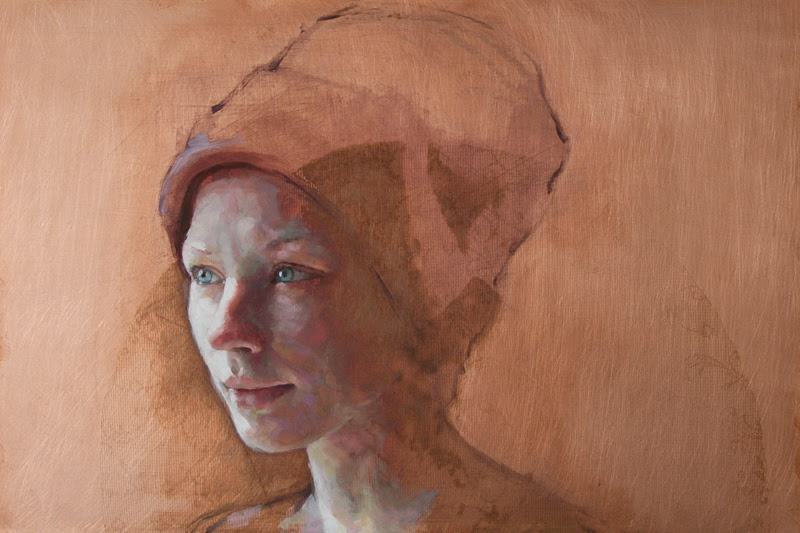 |
| Clarity - Oil on Copper. |
An Interview with Jennifer Anderson.
Who and where are you from?
My name is Jennifer Anderson and I am a UK artist living in Glasgow.
How you got into this?
Art runs in my family; my mum and sister are painters and my brother is a film maker. My whole childhood was immersed in drawing, painting and creativity and that matured into a love of art that took me on to art school and a professional painting career.
What is your driving force?
I love to paint and I’m fascinated by people. Human interaction is the bedrock of our existence and, for me, there is nothing more fulfilling that trying to capture that human experience in my work.
What kind of work you do and why?
I paint in oil on various surfaces; canvas / metal / plaster. People are my subject and I strive to create work that is realist but also expressive.
There are two basic strands of thought that inform the artistic choices I make:
1. The visual aesthetic;
Decisions about composition, colour, handling of paint, and all the classic artistic considerations involved in applying oil paint to a surface, and striving to be as skilful a painter as it is possible for me to be.
2. The emotional experience of one person looking at another;
I want to create an intimate relationship between the viewer and the subject. Through use of pose, body language and mood, I want to focus the viewer's gaze on the subject so that they can allow themselves a pure emotional reaction that speaks as much of their own feelings and experiences as of those they interpret in the subject they are regarding.
These two aspects do not work completely separately. I have made the decision to concentrate on a single figure in an ambiguous background both for the beautiful simplicity of the visual effect and because it forces the viewer into an immediate dialogue with the subject. A person viewing a group is automatically an outsider, whereas to look upon a single figure creates a dynamic between the viewer and subject that becomes much more intimate. Similarly, to put the subject into an environment that is clearly different from that of the viewer creates a barrier to the feeling of shared experience, whereas an empty or ambiguous background can create mood without being a distraction. A figure becomes timeless when their environment is removed.
I am concerned with the disciplines involved in painting, the subtleties of colour and texture, the joy of the brushstroke, to be able to manipulate paint and create a three dimensional image on a flat surface through the moulding of light and shade and the unendingly fascinating possibilities of colour, especially when it is reduced to its most subtle elements so that you can appreciate the beauty in the slightest variation.
I have attempted to focus on the delicacy of the surface of skin by stripping back all aspects of the composition that distract the eye from the skins' texture. I want to encourage the viewer to look at the beauty and subtlety of paint depicting skin, to appreciate flat surface turned into moulded form as it is juxtaposed with blank colour, or flat pattern. This excites me aesthetically, and it also focuses attention on the figure. It forces the viewer to make decisions about the character, mood, and thoughts of the subject rather than their physical surroundings or any other societal trappings that sub consciously suggest status or background. The question becomes one of what is going on inside the subject's head rather than an interpretation of the swirl of life surrounding them.
The voyeuristic aspect of figurative painting also interests me. To scrutinize another person is not socially acceptable unless that person is known intimately or is unaware of the viewer's gaze. For a viewer to be in a position where they can scrutinize with impunity a figure in a painting puts them immediately in an intimate relationship with the subject. If the subject, however, appears unaware of this scrutiny there can be an added frisson of voyeuristic danger – what if the subject were to turn or open their eyes and catch the gaze – as well as a feeling of safety in the knowledge that that could never happen. It is, after all, just a painting, but that does not alter one person's instinctive reaction to seeing another.
My aim is to strip back the layers of unimportant visual distractions and focus the viewers' gaze so that they can break through the surface to the emotional core of the reaction that one person has to another, whilst also creating something beautiful in its simplicity.
Emotional complexity amplified by visual simplicity.
I hope to leave space for the imagination, to minimise unnecessary distractions, both visually and emotionally and let the viewer make up their own mind as to what the painting is saying to them – the only way to have a truly satisfactory artistic experience.
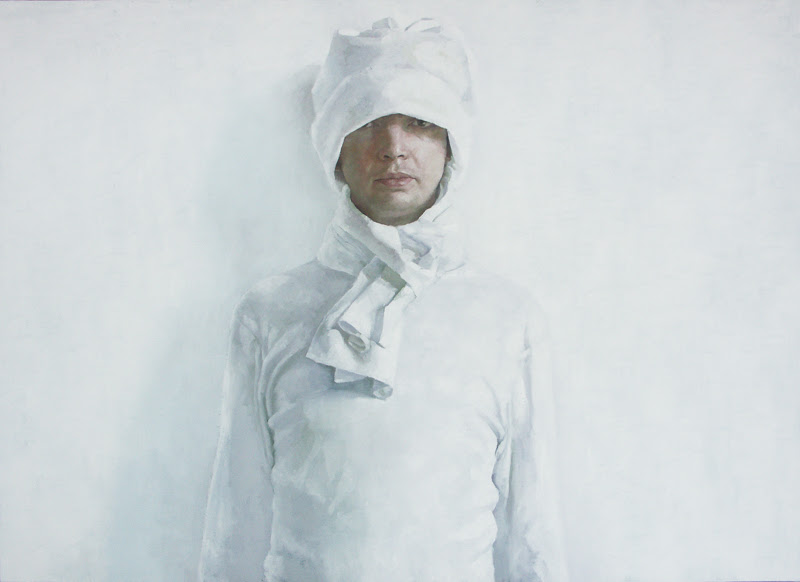 |
| Winter Crown |
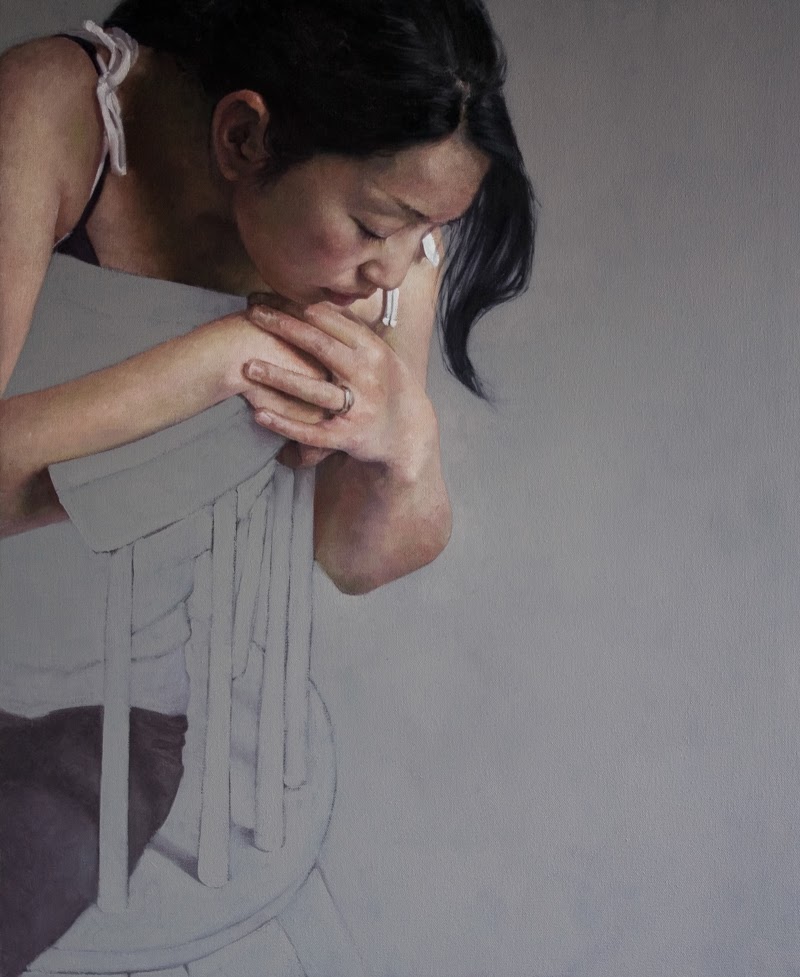 |
| Fragile |
 |
| Whispered - oil on brass |
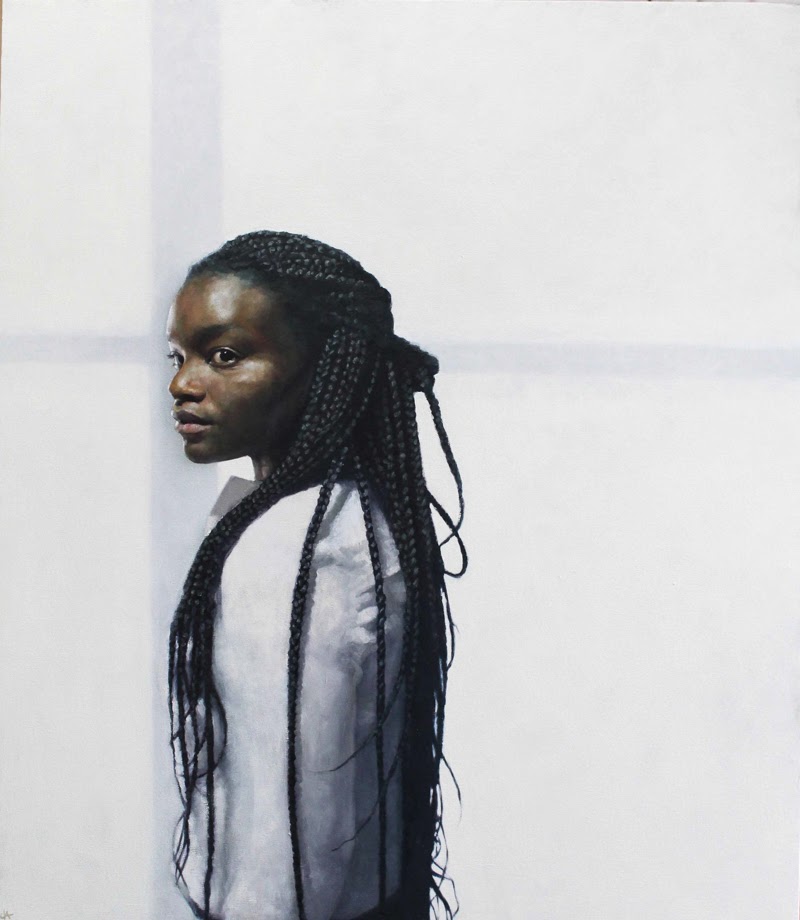 |
| Braids - oil on canvas |
 |
| Londoner - oil on plaster |
 |
| Yellow Table - oil on canvas |
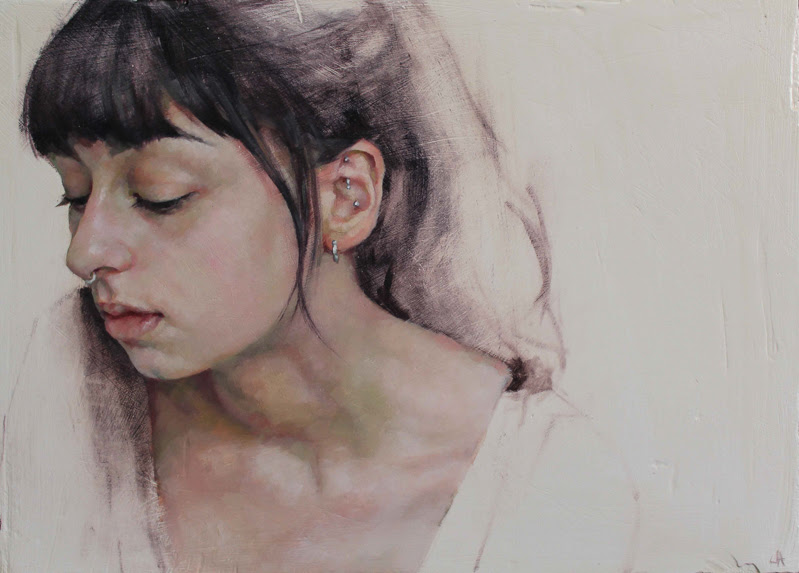 |
| Yesterday - oil on stone plaster |
 |
| Rainbow Scarf - oil on canvas |
 |
| Murmur |
 |
| Traveler - Oil on Canvas |
 |
| Bliss - Oil on Brass |
 |
| Alice - Oil on zinc |
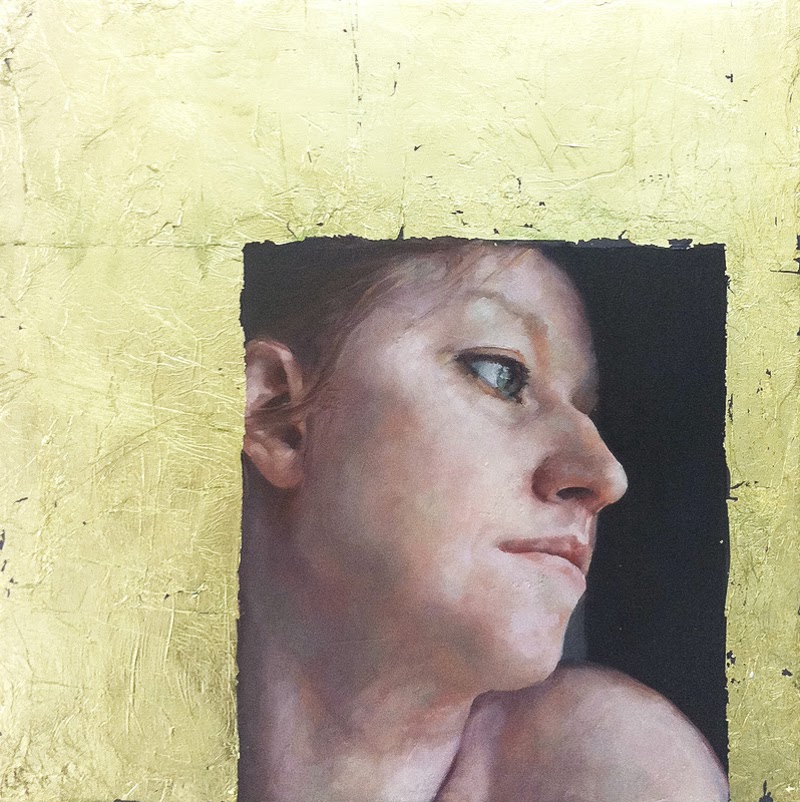 |
| Treasured II - oil on board with gold leaf |
 |
| Vintage - Oil on Brass. |
 |
| Certain - Oil on Aluminium. |
For more of Jennifer Anderson Check the links below:
Website: www.jennifer-anderson.co.uk
Facebook: https://www.facebook.com/jandersonyart
Instagram: https://www.instagram.com/jandersonyart/
Twitter: https://twitter.com/janderony
All Images are copyright by: Jennifer Anderson

No comments:
Post a Comment